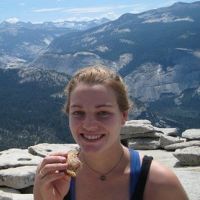Jessup et al., 2011
Landscape response to tipping points in granite weathering: The case of stepped topography in the Southern Sierra Critical Zone Observatory
Jessup, BS; Hahm, WJ; Miller, SN; Kirchner, JW; Riebe, CS. (2011)
Applied Geochemistry
-
Sierra, GRAD STUDENT
-
Eel, INVESTIGATOR, COLLABORATOR
-
Sierra, COLLABORATOR
-
Sierra, INVESTIGATOR
Abstract
The dynamics of granitic landscapes are modulated by bimodal weathering, which produces patchy granular soils and expanses of bare rock ranging from meter-scale boulders to mountain-scale domes. We used terrain analysis and with cosmogenic nuclide measurements of erosion rates to quantitatively explore Wahrhaftig’s decades-old hypothesis for the development of “stepped topography” by differential weathering of bare and soil-mantled granite. According to Wahrhaftig’s hypothesis, bare granite weathers slower than soil-mantled granite; thus random erosional exposure of bare rock leads to an alternating sequence of steep, slowly weathering bedrock “steps” and gently sloped, but rapidly weathering, soil-mantled “treads.” Our investigation focused on the terrain surrounding the Southern Sierra Critical Zone Observatory (CZO), which is underlain by granitic bedrock and lies outside the limits of recent glaciation, in the heart of the stepped topography described by Wahrhaftig. Our digital terrain analysis confirms that steep steps often grade into gentle treads, consistent with Wahrhaftig’s hypothesis. However, we observe a mix-and-match of soil and bare rock on treads and steps, contrary to one of the hypothesis’ major underpinnings – that bare rock should be much more common on steps than on treads. Moreover, the data show that bare rock is not as common as expected at step tops; Wahrhaftig’s hypothesis dictates that step tops should act as slowly eroding base levels for the treads above them. The data indicate that, within each landscape class (i.e., the steps and treads), bare rock erodes more slowly than surrounding soil. This suggests that the coupling between soil production and denudation in granitic landscapes harbors a tipping point wherein erosion rates decrease when soils are stripped to bedrock. Although broadly consistent with the differential weathering invoked by Wahrhaftig, the data also show that steps are eroding faster than treads, undermining Wahrhaftig’s explanation for the origins of the steps. The revised interpretation proposed here is that the landscape evolves by back-wearing of steps in addition to differential erosion due to differences in weathering of bare and soil-mantled granite.
Citation
Jessup, BS; Hahm, WJ; Miller, SN; Kirchner, JW; Riebe, CS. (2011): Landscape response to tipping points in granite weathering: The case of stepped topography in the Southern Sierra Critical Zone Observatory. Applied Geochemistry .
 This Paper/Book acknowledges NSF CZO grant support.
This Paper/Book acknowledges NSF CZO grant support.
Explore Further




